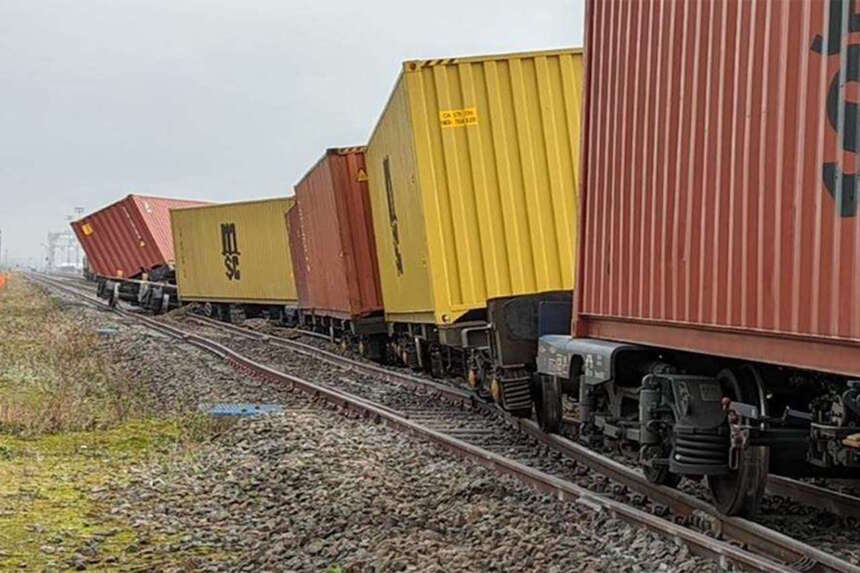Following a freight train derailment at London Gateway Terminal, in Essex, on the 24th December 2021, the RAIB has released its report.
At around 05:45 on the 24th December 2021, 5 wagons of an intermodal freight train derailed when it was entering London Gateway port in Essex.
The derailment started when wheels on one of the wagons started to lift suddenly, with the other wagons derailing when they passed over points within the rail terminal.
RAIB has today released its report into a freight train derailment at London Gateway, Essex, 24 December 2021.
While no one was injured, the damage caused to infrastructure meant that rail freight in and out of the port was disrupted for 14 days.
The first wagon that derailed was an unloaded centre wagon of a triple-wagon, which is made up of three wagons that are permanently coupled together. The wagons either side of this wagon were all loaded.
A dynamic simulation model showed that compressive forces generated in the train were greater in the middle of the train, where the unloaded triple wagon was located, and this rapidly increased to a maximum as the centre wagon approached the point where it derailed.
Derailments in 2015 involving an earlier version of the triple wagon demonstrated that the triple wagons were susceptible to derailment when large compressive forces are suddenly applied.
The RAIB has made three recommendations following its findings. One is directed to VTG Rail, the owner and developer of the triple-wagon, covering the need to identify and implement any necessary design changes and operating restrictions. The second is directed to GB Railfreight, the operator of the train, covering the need to develop instructions and best practice guidance for its operations staff. The third is directed to RSSB covering the need to raise the rail industry's understanding of the derailment risks associated with longitudinal compressive forces and the management strategies that need to be introduced.

Even as a kid I understood the dangers of empty freight wagons placed between heavy loads. You wouldn’t leave an unloaded void in an aircraft or ship without expecting strains on the vessels structural engineering.
Glad it happened in the yard and not out on the network passing through a passenger station.
Absolutely agree with John Yates, perhaps GB railfreight should practice with OO gauge before they try the real thing. Suggest using the magnetic couplings though 😀
Wholeheartedly agree with Mr John Yates…..
I’m surprised it took two years to report on such a fundamental failing to train loading already understood by many, even in the model train world!